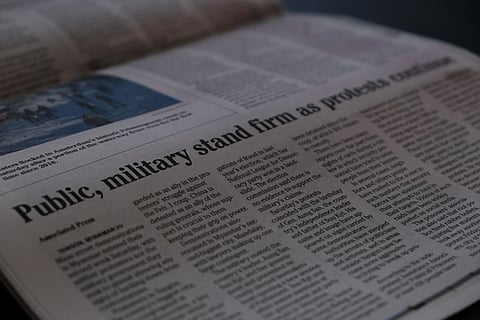
- Home
- NG Hindi
- India
- World
- Politics
- Sex & Relationships
- Entertainment
- Culture
- Lifestyle
- Economy
- Sports
- Sp. Coverage
- Misc.
- NewsGram Exclusive
- Jobs / Internships

People who read quickly tend to skim the information and focus exclusively on the headlines (particularly when reading content online). The signposts that readers use to find their way around a piece of writing are the headlines; they instantly indicate where to begin and which sections are more significant or fascinating. This post will walk you through the process because academic writers frequently struggle with the guidelines for headline case.
The headline case is the practice of capitalizing words in a headline based on their speech part, as per The Chicago Manual of Style (CMOS). The terms "headline style" and "title case" have equivalent meanings, while some UK media also use the term "maximum caps."
As an illustration, consider the headline below. Regulations hinder the development of affordable housing.
Sentence case, often known as "sentence style" or, in some UK publications, "essential caps" or "minimum caps," is an alternative to headline case. When utilizing the sentence case, the headline would read "Affordable housing developers stymied by regulations." As you can see, the first word only has its initial letter capitalized.
Select words that are capitalized visually distinguish the headline from the body of text, making it easier for readers to understand where an article (or a piece of it) begins.
The use of capital letters draws the reader's attention to the article's thesis, which is crucial when they are skimming.
The Chicago Manual of Style provides many guidelines to assist writers in using headline case, noting that its use is "governed mainly by emphasis and grammar."
The headline's initial and last word should always be capitalized.
All nouns, verbs, pronouns, and adverbs should be capitalized.
When a preposition is used as an adjectival or adverb, capitalize it (for instance, down in Turn Down and away in Look Away).
Prepositions in Latin phrases that are used adjectivally or adverbially (such as In Vitro) should be capitalized.
What action should you take when a hyphenated phrase like "black-and-white," "third-floor," or "tight-lipped" occurs in the headline? First, uppercase the first part of the compound, which in the cases above would be the tight third part. Unless it's an article (a or an), a preposition, or a coordinating conjunction (and, but, for, or, nor), capitalize the element that follows. Additionally, you must uppercase the second part of a hyphenated number (for instance: 23).
The first word of a subtitle that follows the main text of a headline is capitalized (for instance, "Struggle and Sacrifice: Toward a Psychology of Grief"). The phrase is typically not regarded as a subtitle if it is preceded by an em dash, in which case the first word need not necessarily be capitalized (for instance, "Manhattan—the city that never sleeps").
A "double title" is a headline that uses the word or rather than a colon to link two related themes. The punctuation "Parisian Culture, or The Separation of Art and Artisans" can be punctuated as either "Culture; or" or "Culture, or," as long as it is applied consistently in both cases. "The" is capitalized in the first instance.
Check the headlines of a few articles on your favourite website to determine if the capitalization is done appropriately and is it consistent. Make it a habit to check headlines, as doing so will make the headline style easier with time. Consistency is your greatest option if the style guide you use doesn't offer clear instructions.
